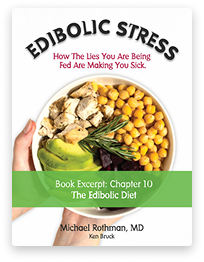Polycystic Ovary Syndrome (PCOS)
Addressing PCOS
Polycystic Ovary Syndrome (PCOS) is commonly associated with irregular menstrual cycles, excessive body hair (hirsutism), acne, weight gain, infertility, and ovarian cysts, but it is a multifaceted endocrine and metabolic disorder that extends far beyond reproductive health. Rooted in insulin resistance, chronic inflammation, hormonal imbalances, and metabolic dysfunction, PCOS can lead to a cascade of systemic health issues that affect your daily life.
Despite its complexity, conventional medical treatments for PCOS often focus on surface-level symptom management—using birth control pills to regulate your cycles or diabetes medications to lower your insulin—without addressing the underlying metabolic disturbances that drive your condition.

The consequences of PCOS reach well beyond irregular periods and cystic ovaries. Untreated or poorly managed PCOS can progressively worsen, disrupting your thyroid function, elevating your estrogen levels, and creating hormonal chaos that exacerbates your symptoms over time. Because PCOS manifests differently for every person, generic treatment approaches often fail to deliver lasting results.
At Michael Rothman MD, we take a functional and metabolically directed approach to treating PCOS. Rather than masking symptoms with temporary pharmaceutical interventions, we identify and correct the root causes of your hormonal dysfunction. By addressing insulin resistance, systemic inflammation, estrogen dominance, and thyroid dysfunction, we aim to restore metabolic balance and help you regain control of your health and well-being.
Ready to Take Control of Your Health?
If you are experiencing symptoms of polycystic ovary syndrome and are seeking effective, metabolically directed treatments, contact us online or call (732) 268-7663 for a consultation.
What are the Symptoms of PCOS?
PCOS symptoms vary from person to person, but some of the most common include:
- Menstrual Irregularities: Long, irregular, missed, or very light periods.
- Excess Body Hair (Hirsutism): Unwanted hair growth on your face, chest, and back due to elevated androgen levels.
- Weight Gain & Insulin Resistance: Difficulty losing weight despite diet and exercise, often linked to high insulin levels.
- Oily Skin & Acne: Increased sebum production leading to persistent breakouts.
- Thinning Hair or Male-Pattern Baldness: Hair loss or thinning at your scalp.
- Cystic Ovaries: A condition where multiple fluid-filled sacs (cysts) develop within your ovaries that can cause pelvic pain, bloating, and irregular periods.
- Infertility: Difficulty or inability to conceive, often linked to ovulatory dysfunction.
- Mood Swings: Frequent changes in your mood, including depression and anxiety.
- Fatigue: Persistent tiredness that doesn’t improve with rest.

Our Functional and Metabolic Medicine Approach to PCOS
At Michael Rothman MD, we understand the significant impact that metabolic imbalances have on your hormonal health and overall well-being. Our approach to treating polycystic ovary syndrome involves a comprehensive, metabolically directed method to identify and address the root causes of your symptoms, such as hormonal imbalances, environmental stressors, stealth infections, dietary indiscretions, circadian dysfunction, gut dysbiosis, and limbic dysfunction.
Learn More About Our Metabolic Approach To PCOS.
Diagnostic Methods Used:
- Pelvic Ultrasound to identify the presence of ovarian cysts and assess overall ovarian and gynecological health.
- Comprehensive evaluation of your dietary habits, environmental exposures, and stress levels.
- In-clinic metabolic testing to measure your anabolic-catabolic balance, autonomic nervous system balance and acid base balance.
- Blood tests to identify your nutritional deficiencies, insulin levels, glucose metabolism, thyroid status including reverse T3, sex and adrenal cortex hormone levels, inflammatory markers, and other root causes of your PCOS.
- Stool tests to identify abnormal bowel flora growth, parasites, stealth organisms, dysbiosis, inflammatory markers, and other factors contributing to your PCOS.
- Organic acid testing to evaluate methylation status, detoxification pathways, mitochondrial functioning, neurotransmitter balance, and other aspects of your metabolism.
Potential Treatment Options:
- Metabolic therapy focused on restoring your body’s homeostatic control systems.
- Personalized dietary recommendations to reduce your inflammation, correct your nutrient deficiencies, stabilize your blood sugar, support your hormonal balance, and reduce autonomic dysfunction.
- Personalized, targeted nutritional supplementation to modulate your estrogen metabolism, reduce your estrogen overload, correct your dysbiosis, and support your overall health.
- Bioidentical Hormonal replacement therapy, if needed to restore your normal hormone balance.
- Thyroid hormone replacement, if needed to optimize your metabolism.
- Lifestyle modifications to reduce stressors and support your body’s healing process (exercise, stress management, and sleep hygiene).
Why Choose Functional and Metabolic Medicine for PCOS?

At Michael Rothman MD, our functional and metabolically directed approach to PCOS goes beyond symptom suppression. We recognize that PCOS is not just a reproductive disorder—it is a complex metabolic condition that requires a systemic approach to healing. Whether your PCOS is driven by insulin resistance, excess estrogen, chronic inflammation, or thyroid dysfunction, our approach, which includes comprehensive diagnostic testing to pinpoint your specific imbalances, works to restore your metabolic balance and support optimal hormone function.
By treating your PCOS at its core, we help you regain control of your health—not just by managing your symptoms but by correcting the metabolic and hormonal disruptions that contribute to them. Our goal is to provide a sustainable, lasting solution that improves your energy levels, weight management, reproductive health, and overall metabolic function, empowering you to achieve true, long-term wellness.
Ready to Take Control of Your Health?
If you are experiencing symptoms of polycystic ovary syndrome and are seeking effective, metabolically directed treatments, contact us online or call (732) 268-7663 for a consultation.
Meet Dr. Michael Rothman: Holistic Health and Metabolic Medicine Expert
Dr. Michael Rothman is a Functional and Metabolic Medicine Specialist with over two decades of holistic practice. Drawing on his personal experience with Crohn’s disease, he is passionate about utilizing metabolically directed functional medicine to address complex health conditions, like polycystic ovary syndrome. Dr. Rothman’s comprehensive method considers dietary habits, genetic predispositions, and environmental factors to identify and treat the metabolic imbalances at the root of your health issues.
Certified by the National Board of Medical Examiners and the New Jersey State Board of Medical Examiners, he also holds board certifications in Internal Medicine and previously in Emergency Medicine. His unique approach integrates knowledge from nutrition, biochemistry, physiology, and physics, alongside extensive training in environmental illness, medical acupuncture, naturopathy, Reiki, qigong, and oriental martial arts. Patients can expect a thorough, individualized approach aimed at restoring and maintaining lasting well-being.

Frequently Asked Questions
Insulin resistance is a key driver of PCOS, leading to weight gain, high insulin levels, and excess androgen production. This metabolic imbalance causes irregular cycles, acne, and hair growth. Managing your insulin resistance through diet, lifestyle changes, and targeted supplementation is essential for restoring your metabolic balance.



